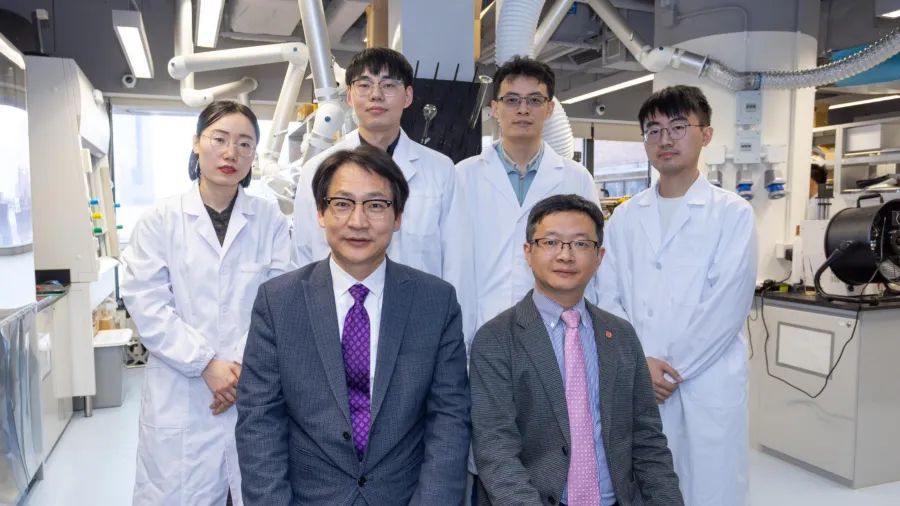
PolyU researchers develop self-stimulated mechanism for ejecting freezing droplets
This requires no external energy input and can work against gravity and wind.
Researchers at The Hong Kong Polytechnic University (PolyU) have developed a self-powered mechanism for ejecting freezing droplets.
The breakthrough was published as the cover feature in Nature Chemical Engineering in December 2024.
Led by Zuankai Wang, associate vice president (Research and Innovation) at PolyU, and Haimin Yao, associate professor in the Department of Mechanical Engineering, the project focuses on a novel mechanism inspired by fungi that eject spores through volume expansion.
The PolyU team replicated this process by developing a structured elastic surface (SES) with spring-like pillars, allowing freezing droplets to eject themselves. The freezing droplet's expansion compresses the pillars, converting stored elastic energy into kinetic energy, which propels the droplet away.
The SES surface is designed to harness the volume expansion of freezing droplets, converting this into kinetic energy through elastic deformation. As the droplet freezes and expands, it compresses the pillars of the SES, storing elastic energy. This energy is then rapidly released, propelling the droplet away in a fraction of a second. The simple yet effective design requires no external energy input and can overcome wind and gravity forces, making it a practical solution for preventing ice accretion on surfaces such as aircraft wings, wind blades, and cable lines.
"It is exciting that we, for the first time, introduce a self-powered ice removal concept that will offer a wide range of innovative solutions,” said Huanhuan Zhang, a co-author. “We will continuously improve the design of SES, allowing it to be manufactured at various scales and at a low cost to meet societal needs."
Moreover, the team's theoretical model identified key factors for successful droplet ejection and suggests scalability for broader use in various fields.



















 Advertise
Advertise






